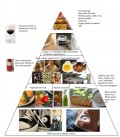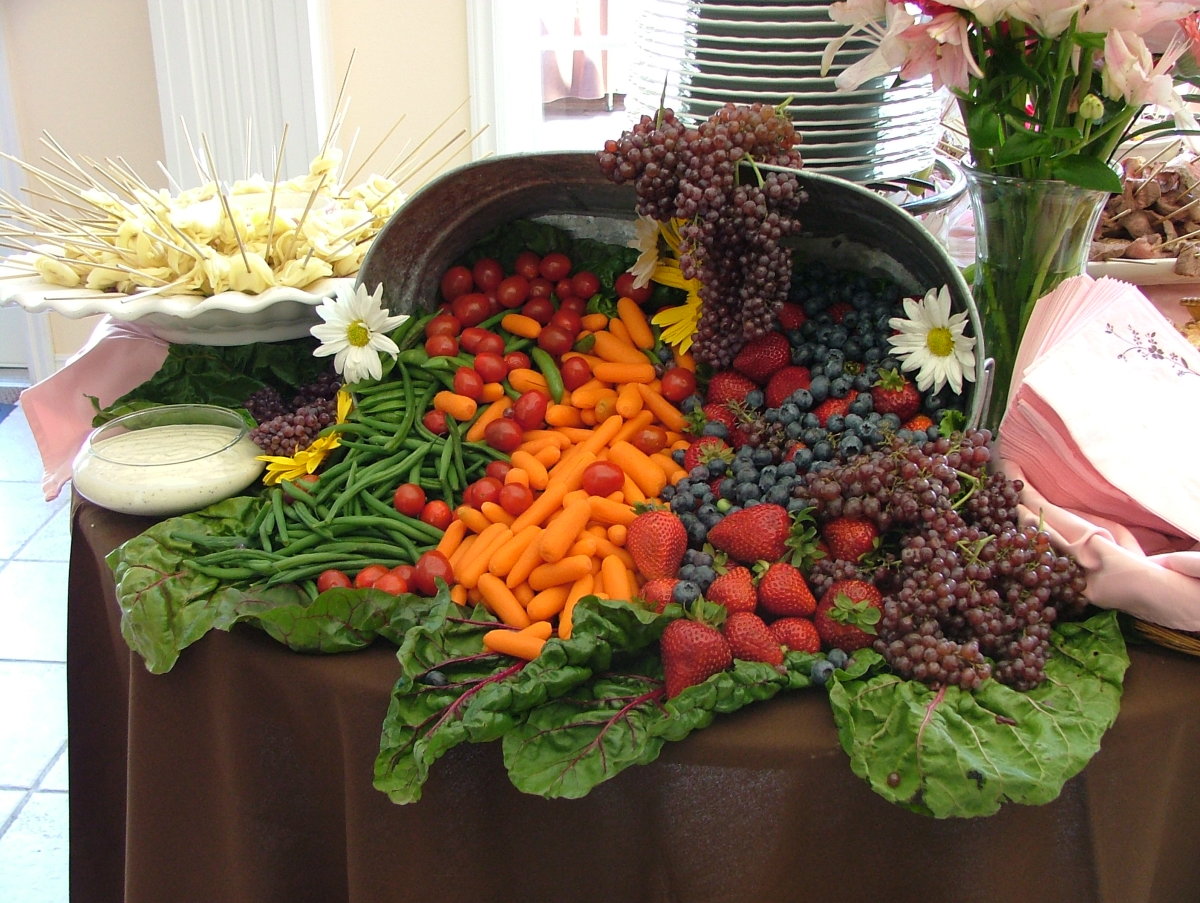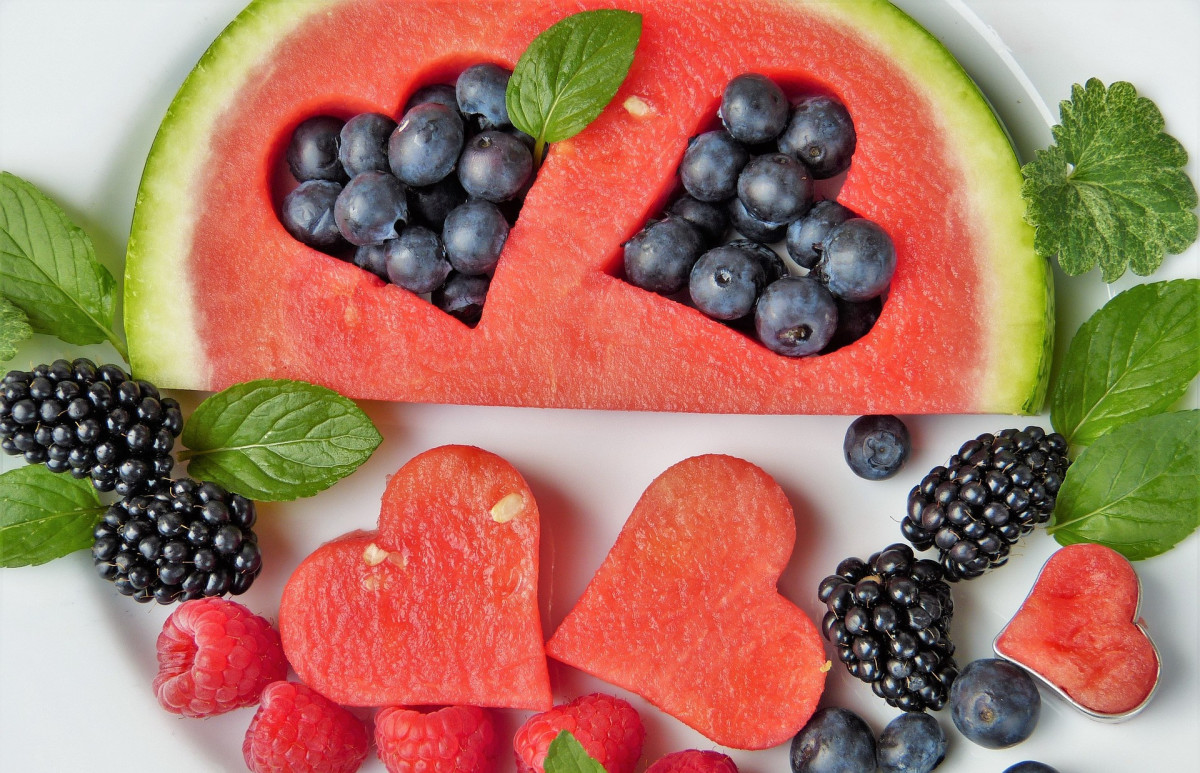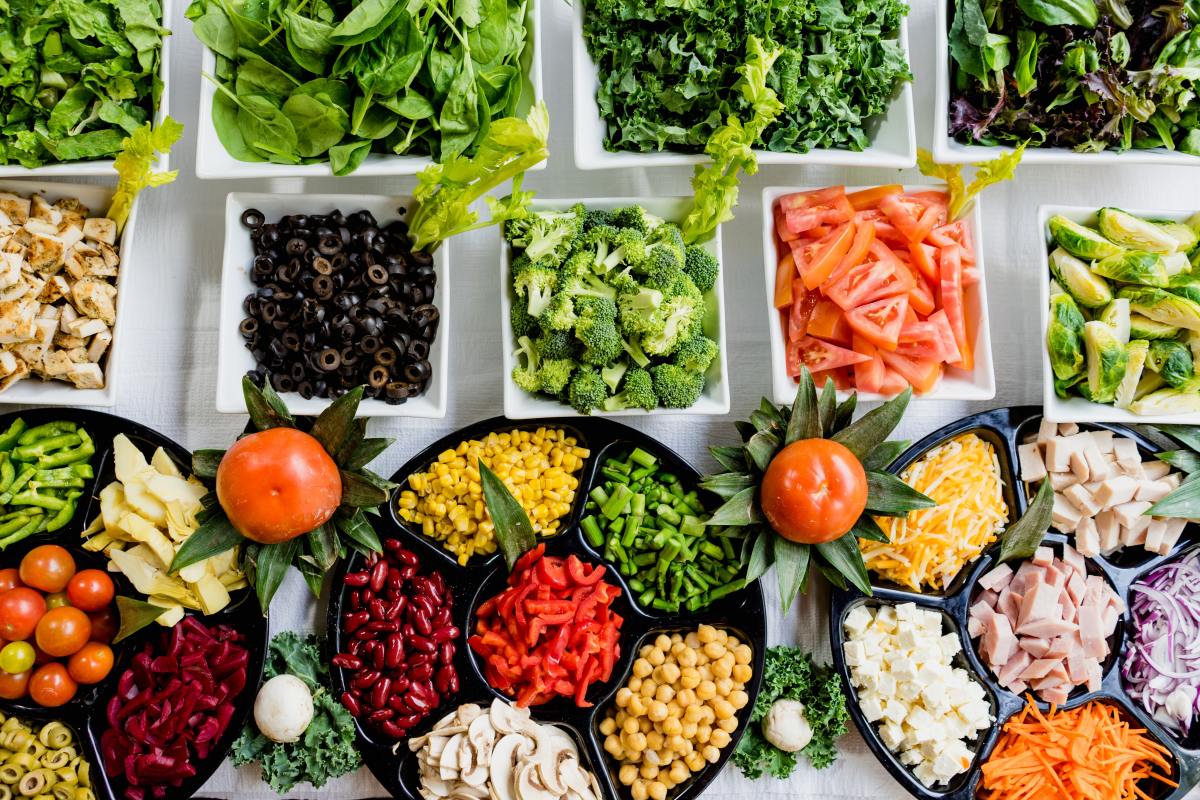Coaching Kids To Healthy Eating
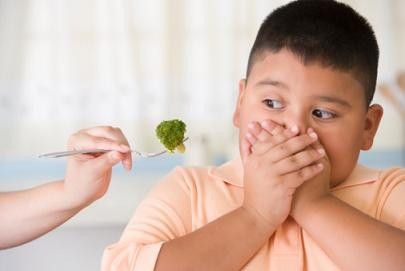
Parents Healthy Ways for Picky Eaters
Are your children giving you the crawls, when it comes to eating? Let me start by saying, you are not alone! This concern is so common, and has been part of many families for decades, and being a mother of 3 most certainly doesn’t get it off my back.
There are many reasons out there, including those of health nature. However, as it could be of health or inheritances, we can’t discard the fact that most of times this could be also a matter of the parent’s disposition, and not the children.
Today’s current frantic lifestyles are changing family eating habits dramatically, but for the worse, and for that, the outrageous statistics out there on child undernourishment, those who don’t get enough nutritional value, suffering tooth decay and of course the frightening rising numbers in child obesity. During the last 20 years, there has been an astounding increase in obesity in the U.S. and rates remain high, approximately 17% (or 12.5 million) of children and adolescents aged 2—19 years old, based on data from the National Health and Examination Survey.
Stress, frustration, tiredness, lack of time and creativity, could be some of the reasons when it comes to feeding children, and in most of occasions, turns into the quick, microwavable and drive-trough’s easy routes for some parents. Then, we are not discussing our concern about picky eaters here, but more about worn-out, hard-working parents, longing to have the extra time and learn about creative and easy, fussy-free healthy ways on feeding their children.
These days most families share this common dilemma and to make things worse and more puzzling for parents, there are quite few theories and scientific studies out there coming form all upbringings, such as the one led by Dr. Lucy Cooke, from the Dept. of Epidemiology and Clinical Nutrition at the University College London, that was published in the American Journal of Clinical Nutrition in where Dr. Cooke and others in the field believe, by using a standard scale, to scrutinize the influence of genetics and environment to childhood, as neophobia (fear of new things). According to the report, 78% is genetic and the other 22 percent environmental.
“People have really discharged this as an idea because they have been looking at the social relations between parents and their children,” Dr. Cooke said. “I came from a position of not wanting to blame parents.”
Most children eat a vast diversity of foods until they are around 2 years old, when they unexpectedly stop. This period can last at least until they are 4 or 5 years old. This fact, it’s an evolutionary response, researchers believe. Kids’ taste buds stop at just about the time they start walking, changing the way they eat by having more control, says Dr. Cooke. Consequently, once control is gained by children, that is when our duty as parents take a major role. It takes tolerance, persistence, consistency and yes, considerable amounts of creativity.
Additional substantial suggestions coming from academic researchers and pediatricians, such as Dr. Jorge Abel Salinas, pediatrician in the program RPP Rotary Field in Lima, Peru, where he strongly believes is very important to differentiate whether the cause is a health problem or just a bad-eating habit. “Though, lack of appetite also could be for the lack of vitamins or minerals. Children born with low iron stores may be because the mother had anemia or poor eating habits during pregnancy, then the child is likely to suffer from lack of appetite for iron and zinc, such as those just wanting to eat animal protein and not veggies”. “In the first case, children who do not eat, do not want to play and look lethargic, are undernourished or the contrary, overweight, in either case children should be taken to the doctor to be diagnosed; however, if is not health related, it is likely to be due to a bad start feeding habit from as early as four to six months old, and even so from the mother’s womb”, says Dr. Salinas.
"Threats, physical punishment or rewards are inadequate to make children eat, what parents need to understand is that feeding them is a process that began when their teeth came out to a year, always ensuring to eat a variety of healthy foods; if that goal is not achieved, the problems will come later, when the child learns to distinguish what he likes and does not”, remarked Salinas.
Either way, it all comes down to power; whether your child is a toddler or a teen, be their SUPERHERO! Gaining control over his or her eating habits would be rather imperative for parents, taking the steps necessary to improve their nutrition and form good eating habits from the early stages. On average, we parents directly influence at least 72% of our kids’ diets throughout their childhoods into adulthood. For those of us who cook and eat healthy, our “nutritional gatekeeper” influence averages higher, up to 87%, according to Brian Wansink’s research published in the Journal of the American Dietetic Association, Journal of the American Dietetic Association.
Collaborative key suggestions preceding from all sources, are that parents should learn to be fun and creative when it comes to feeding their children, and providing a nice-looking plate of food is so important; for example, it is not the same having some plain brown rice scoop on a plate, but instead do so by using colors and forming fun shapes with carrots and peas in a round mold, square or triangular; as you can see now we just must be armed not only with patience, consistency and perseverance, but plenty of imagination to provide the nutrients they need. Please visit the following link for additional recommendations: http://www.mayoclinic.com/health/childrens-health/HQ01107
Is NO Secret! Being able to succeed having strong, nourished children, it is by exceptionally incorporating healthy ways from the very beginning; by feeding them with plenty of whole, nutritious fruits and vegetables and the least in processed and preserved, sugary unhealthy foods.
How to start? Simply redesigning your kitchen storerooms, such as cupboards and fridge, give it a good clean-up getting rid of the junk and restocking it with healthy foods options, will provide an easier transition for everyone. Just by having handy nourishing foods in your cabinets and for parents with time restrictions have some foods already packed in the freezer on individual storage bags, ready to go. (Tip: Getting a cooler for your car can save you time and money.)
(NOTE: Please consult with your pediatrician before feeding your child with any unfamiliar foods that he/she may or may develop allergies or be potentially harmful to them.)
HEALTHY GROCERY SHOPPING LIST: Subject to parent’s preferred nutritional approach, as those coming from diverse ethical backgrounds; such as, meat-eaters, veganism, vegetarianism, pescaterianism or raw foodies, it is important to understand that growing bodies in children and specially their minds, need a vast variety of nutrients; and in some cases, supplements are necessary to be able to fulfill their active physical and mental needs. Please don’t just assume; physicians, nutritionists and registered dietitians can assist you with the right information and recommendations to adapt for your distinctive child.
Here are some ideas; but not limited to some of the kid’s favorites that could be useful by having accessible in your kitchen – not in alphabetical order: (Tip: Buying Organic fruits and vegetables in Season have extra nutritional value; furthermore, owning a dehydrator and a food processor have a great advantage, when it comes to having healthier homemade healthy meals.)
1. NUTS and SEEDS! (Just say ‘no’ to excess salt, sugars or oils): All nuts – pecans, almonds, walnuts, brazils, macadamias, cashews, unshelled pumpkin and sunflower seeds, fresh coconut bite size chunks (yes, it is a seed!).
2. FRUITS: Apples, all berries – strawberries, blueberries, blackberries, and raspberries, cranberries, bananas, grapes, peaches, pears, apricots, plums, avocados, zucchinis, figs, kiwi, grapefruits, lemons (some kids lean for sour flavors), tangerines, cherry tomatoes – red, yellow or both, mangos, cantaloupes, honey dews, watermelon and pineapple chunks. Raw fruits and dry are suitable; like, goji berries, raisins, mango, coconut, pineapple, dates, apples, etc. You can even make their favorite nut mix. Let them chose.
3. VEGETABLES: Carrots (all colors), celeries; red, yellow, green or orange sweet bell peppers, beets, broccoli, cauliflower, cucumbers, spinach, corn, endives, Winter and Summer squashes, Lacinato kale, romaine lettuce, alfalfa sprouts, beets, watercress, all beans and peas, brown rice, asparagus, potatoes, sweet potatoes, parsley, parsnips, turnips, water chestnuts, yams and nori seaweed.
4. PROTEINS: As children, our mothers' milk provides the protein necessary to grow healthy and strong. Once babies start eating solid foods, non-animal sources can easily provide the necessary protein (only 10% of the total calories consumed by the average human being, need be in a form of protein, based on the recommended “Dietary Daily Allowance” for both men and women is 0.8 grams of protein for every kilogram (2.2 pounds) of body weight). People with special needs (such as pregnant women) are advised to get a little more. Vegans shouldn’t be concern about getting adequate amounts of protein; if a sensibly varied diet and sufficient calories are ingested, the body will be undoubtedly nourished. Protein deficiency, or "kwashiorkor," is very rare in the U.S. and is usually diagnosed in people living in countries suffering from deprivation, based on the U.S. National Library and the National Institutes of Health, “Kwashiorkor,” MEDLINEplus Medical Encyclopedia. By contrast, eating too much of animal protein, has been directly linked to the formation of kidney-stones and has been associated with cancer of the colon and liver, based on the New England Journal of Medicine and “The Diet and Cancer Connection book,” by Kathleen M. Stadler. By replacing animal protein with vegetable protein, families can achieve optimal health while experiencing a broad variety of delectable foods.
If your family’s eating habits are not valued grounded and have to include animal products, based on the Humane Slaughter Act, “supposedly” some animals are handled in a more humane production, “happy meat” as the 100% Organic, Cage-free, drug-free, grass-fed animals, reinforcing the impression that the products sold there are produced with special consideration for the well-being of the animals whose lives were taken. Use your own judgment when it comes to feeding your kids with chicken, beef and pork meats, taking into consideration the “hazardous cholesterol levels” in their small growing bodies. As far as seafood’s, some thing they are the best source of protein, as “pescaterians” prefer; however, it is important to know that there are always traces of mercury and can be extremely harmful especially to children. Consider supplementation in some cases, at your pediatrician’s approval.
5. HIGH PROTEIN VEGETERIAN SOURCES: All beans, all kinds of Tofu; Protein in Legumes: Garbanzo beans, kidney beans, lentils, lima beans, navy beans, soybeans, split peas; Protein in Grain: Barley, brown rice, buckwheat, millet, oatmeal, quinoa, rye, wild rice; Vegetable Protein: Artichokes, beets, broccoli, brussels sprouts, cabbage, cauliflower, cucumbers, eggplant, green peas, green pepper, kale, lettuce, mushroom, mustard green, onions, potatoes, spinach, tomatoes, turnip greens, watercress, yams, zucchini; Protein in Fruit: Apple, banana, cantaloupe, grape, grapefruit, honeydew melon, orange, papaya, peach, pear, pineapple, strawberry, tangerine, watermelon; Protein in Nuts and Seeds: Almonds, cashews, filberts, hemp seeds, peanuts, pumpkin seeds, sesame seeds, sunflower seeds, walnuts (black)
One excellent ingredient to look for is hemp seed protein. Hemp seeds are a nutritious dietary source of easily digestible gluten-free protein. It provides a well-balanced array of all the amino acids, including 34.6 grams of protein for each 100 grams.
6. OTHER FOODS: (Use caution with portions and sources) Pasta – all kinds, brown whole grain rice, couscous, vegan – dairy-free cheese and spreads, breads, bagels, English muffins, crackers, granola, pop corn, carob (great chocolate substitute), dairy free dark chocolate, raisins, maple syrup, agave. It’s preferably buying casein and gluten-free products (such as rice or soy and flax based – rice cakes are a great snack, “Kashi” and “Real Foods” products are great like the Corn Thins Flax & Soy, these taste great. Kids like them because they taste a lot like popcorn).
7. BUTTERS and OILS: There are many recipes out there, in which you can make your own healthy, hearty, gluten free, cholesterol and saturated fats free butter; furthermore, you can find an array of healthy butters and oils already made in stores, as almond, coconut, peanut, cashew, etc., it goes the same way for oils, such as olive, rice, coconut oils, etc.
5. DRINKS: (No Sugar (or other Sweetener) Fruit Products) Plenty of water is the #1 drink your children should consume and any fresh fruit juice is all right… of course, unsweetened and frozen 100% fruits, your own or any brand, dairy free milks, rice coconut and almond milk are a fantastic choice.
Just go for it and don’t feel intimidated! Kids love the fact that parents are taking their time to improvise in the kitchen and please tiny challenging palates. For healthy fun snacks use small fun colorful serving plates and bowls and offer plenty of different options. Place the bowls in the middle of your table and watch snacks get eaten up so fast, they won’t know it is great for their growing bodies! Just make sure you stay away from salty, sugary foods.
Remember that a well-planned family healthy meal on a regular basis adds an enjoyable pattern for parents, caregivers and children. Children love the predictability giving the family the opportunity to catch up, plus the cooking aroma stimulates their appetite. Children participating in a home cook meal are more likely to try on new things by imitation.
Here are 5 simple ideas to integrate items from your “Healthy Grocery Shopping List”:
1. Shakes or Smoothies! Some kids prefer having a drink rather than to eat it. In a way is an advantage, since it gives you the opportunity to sneak in any extra added value. Rice, almond, flax milk and fresh fruits – along with nutritious supplements such as, yogurt, agave, and peanuts, almonds, and cashew or coconut butter – can be the basis of very tasty healthy shakes.
- GREEN BANANA: Add a banana, flesh of a peach, a pear, a kiwi, a bunch of strawberries and a mango and 1 Lacinato kale leave in a blender and create this delicious smoothie. Kids love to see the mystical change from fruits into liquids.
2. Dunk you very much! Young children think that immersing foods in a tasty dip is pure fun (and delightfully messy). Some options are: Tofu dips, hummus, homemade fruit jams, guacamoles, salsa, peanut, coconut or almond butter, pureed fruits or vegetables, one favorite is the low fat plain Greek yogurt, where they can add absolutely any natural fruit. Those dips serve similarly well as spreads on apple or pear slices, bell-pepper strips, celery and carrot sticks, rice cakes, crackers, or other various nutritious platforms.
- CHO-CARROT & CHOCOLATE PUDDING: Anything with the “Choco” word in it, kids love! Melt some carob or dairy-free dark chocolate chips in a saucepan and wet some carrot chips, great disguise and so yummy. You can also make a raw vegan chocolate pudding by smashing 1 avocado, 2 tablespoons raw carob powder, and a tbsp. of agave. Creamy and delicious!
3. Shape it up. How much a child will eat often depends on how creative you cut it and decorate their plates. Create fun shapes and combine the most colors in your salads. Cut fruits, veggies, sandwiches, pancakes, waffles, and pizza into various shapes using cookie cutters. Looks are key. Good-looking plates and specially the ones with partitions are a favorite!
- TOP IT UP WITH STARS: Fill-up a clear bowl with all the berries you may have and top it with slices of star fruits and star-shaped watermelon chunks. Kids love to use their imagination while they are eating. Always keeping a bowl full of fresh organic fruit washed and ready to eat within everyone’s reach is another form to provide a healthy solution to sugar lows hit.
4. Just my size. You can also try the scaled-down approach. Either serve pint-size portions or, when they're available, buy munchkin-size foodstuffs, such as mini bagels and tiny muffins.
- STACK IT UP & GLAZED MINI-CARROTS: Stack it up with mini-rice cakes. Get mini apple-cinnamon rice cakes, natural peanut or almond butter and banana slices. Stack all the ingredients up in layers. You can have them select their favorite fruit and make it more fun for them. Also, glazed mini carrots are a delicious choice most kids love – in a large skillet combine 2 cups of mini carrots, 1/3-cup water, 1 tbsp. lemon juice and 1 tbsp. orange juice, 1 tbsp. agave, 1 tbsp. of almond butter, sea salt to taste. Bring all ingredients to a simmer over medium-high heat. Cover and cook until tender, 5 to 7 minutes. Uncover and cook, stirring often, until the liquid is a syrupy glaze, 1 to 2 minutes.
5. Grow with me. Plant an herbal and vegetable garden with your child. Let them help care for the plants, harvest the ripe vegetables, and wash and prepare them. They will probably be much more interested in eating what they helped to grow.
- SEAWEED (Nori) OR ROMAINE LETTUCE WRAPS: You can make your own healthy dairy free, vegan spreads using your homegrown sprouts, herbs or just about any additional ingredients. Using seaweed and romaine lettuce will be more nourishing. Cheese-less Spread: 3 cups of cashews or almonds soaked 3 or more hours, 1 cup of pine nuts, 1 fresh lemon juice, ¼ cup of water. Combine all ingredients in a food processor until smooth, add more water if is too sticky. Refrigerate any remaining spread for up to 5-7 days. You can also add dried cranberries, raisins, chopped walnuts and agave to taste and make a great holiday raw vegan spread for the family.
Parents healthy ways for picky eaters in the end, will succeed by applying some of these given measures and accessibility. Our days are filled with so many responsibilities, and the convenience of healthy foods should be always at hand.
Remember, lack of appetite in most children is just a temporary situation, meet it with much knowledge, patience, love and of course, a great sense of humor!

